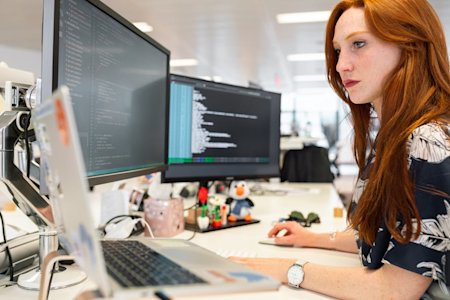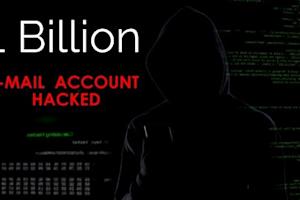Remote desktop software empowers users to access their work computers from the comfort of home, on the road, or anywhere with an internet connection. This unparalleled connectivity and accessibility is fantastic for remote and hybrid employees, but IT security teams are often wary of anything that opens up access to company devices.
Remote desktop security is of the utmost importance, and fortunately, there are plenty of best practices and methods companies can use to ensure their devices remain protected.
With that in mind, let’s explore best practices of remote desktop security and see how companies can use Splashtop to work from anywhere without fear.
The top 10 best practices for enhancing remote desktop security are:
Select a trusted remote desktop solution
Create strong and unique passwords
Implement multi-factor authentication (MFA)
Ensure your software is always up-to-date
Limit user access based on roles
Configure network firewalls
Regularly monitor and audit remote sessions
Adhere to compliance standards
Implement automatic session timeouts
Regularly train employees on security best practices
Key Strategies for Securing Remote Desktop Access
If you’re ready to embrace the power and benefits of secure remote desktop access, there are a few steps you can take to ensure your systems remain secure. These are some best practices for remote desktop access:
1. Select a Trusted Remote Desktop Solution
There are several remote desktop solutions on the market, and not all offer the same features and benefits. You'll need reputable remote desktop software from a company you can trust, one with a proven security track record and compliance with your industry’s standards.
Before anything else, you’ll need to understand your company’s remote access and security needs and look into a solution that can meet those needs. Be sure to research the software’s security features, read user reviews, and ensure it provides the tools you’re looking for. Vendor reputation matters too – if a vendor is known for having great customer support and affordable, predictable prices, it might be a good choice.
Splashtop, for instance, has consistently high reviews from customers across a wide range of industries. Splashtop is also committed to security, which is why it provides several advanced security features and complies with a wide range of industry and government regulations, including ISO/IEC 27001, SOC 2, GDPR, and CCPA.
2. Create Strong and Unique Passwords
A user’s password is their first line of defense against anyone trying to hijack their account. As such, having a strong, unique password is essential.
If you’ve ever had to make a password for a website in the past twenty years, then you’re probably familiar with the best practices for password security already. This includes:
Using a good mix of letters (upper and lower-case), numbers, and symbols
Lengthy passwords (at least 8 characters is recommended)
Avoiding easily found personal information (for instance, using a pet’s name as a password)
Using different passwords for everything, so you don’t risk compromising all your accounts if one password is compromised
A unique and impossible-to-guess password is essential for protecting your devices and accounts. (Remember, in the immortal words of Rick Moranis: “12345? That’s the kind of password an idiot has on his luggage!”)
3. Implement Multi-Factor Authentication (MFA)
If a password is the first line of defense, then multi-factor authentication (MFA) is the second. MFA adds an extra layer of security by requiring a second form of verification after a user enters their password, usually a four-digit code sent via email or text message.
MFA ensures that even if your password is compromised, your account stays protected. You’ll also receive a notification when someone attempts to log in using your password so that you can change your password immediately.
Multi-factor authentication is a powerful tool to prevent unauthorized access to accounts and devices. Organizations should require it when logging in to remote desktop software as a standard practice.
4. Ensure Your Software is Always Up-to-Date
Hackers and other bad actors are always looking for software vulnerabilities that they can use to compromise accounts. Fortunately, security teams are always finding and patching vulnerabilities as quickly as possible.
However, users still need to install the updates and security patches, and skipping updates can leave their systems vulnerable.
It’s important to install updates as soon as they’re available, especially if they include security patches. This will help fix any vulnerabilities and provide your system with the latest security features. Enabling automatic updates helps keep your system up-to-date, but if you keep clicking “remind me later” on update notifications, you’re putting your computer at risk.
5. Limit User Access Based on Roles
Certain jobs and roles will require access to specific tools and information. However, this doesn’t mean these should be available across the entire company.
Limiting access based on job roles helps ensure that the employees who can access certain tools and files are the ones who need them. These restrictions help limit the risk of unauthorized access and ensure that, should one account become compromised, the damage is minimized.
It’s important to regularly review who has permission to access what and implement role-based access controls. Doing so will help keep your work secure even when it’s accessed remotely.
6. Configure Network Firewalls
Firewalls are essential security tools that protect remote desktop connections by monitoring and filtering traffic. Having a firewall installed, configured, and updated regularly can help ensure that the only people accessing your devices are those with permission.
You can configure your firewall to allow specific IP addresses and servers through, preventing unauthorized or unrecognized devices from connecting with your work devices. This helps keep access limited to known users and their devices.
7. Regularly Monitor and Audit Remote Sessions
Do you know who’s frequently remotely accessing your devices? What about the average length of a remote session? The best way to prevent unauthorized access is to remain vigilant, which means monitoring and auditing remote sessions.
Performing regular audits and monitoring sessions helps detect suspicious activities, such as unusual login attempts or changes to your settings. Monitoring software can help you keep records of who accesses devices remotely, as well as when they access them, and track the IP addresses and timestamps to spot anything out of place.
8. Adhere to Compliance Standards
Security standards exist for a reason: they set the minimum levels of security that organizations must achieve. Different industries also have their own security standards, such as HIPAA and GDPR, which technology used in those fields are required to comply with.
It’s essential to be in compliance with all relevant security standards – these are in place for a reason and will help ensure you’re taking the necessary steps to secure and protect data. So when you’re looking at a remote desktop access solution, see what security standards they meet.
Splashtop, for instance, is designed to meet a wide array of security standards, including HIPAA, PCI, and FERPA (in addition to its many security features). Splashtop is built with security as a top priority, ensuring it’s compliant with industry and government regulations, so you can connect remotely with full confidence that your data remains secure.
9. Implement Automatic Session Timeouts
Users should not need to stay remotely connected indefinitely, as doing so can create a security risk should anything happen to their devices. Instead, automatic session timeouts help ensure that users log out when they’re no longer active.
Automatic session timeouts can be set to disconnect users after a certain amount of inactivity. This way, should someone step away from their devices for a time, there’s less chance of a stranger seeing or taking their devices and gaining access for themselves. Once the user returns, they can log back in again and safely resume connecting.
10. Regularly Train Employees on Security Best Practices
For all the security features and tools you use, there’s one vulnerability that no technology can fix: user error. The vast majority of cyberattacks begin with a phishing attack or other form of social engineering to steal a user’s login credentials, and the best way to defend against those is to train employees to watch out for them.
Be sure to provide regular cybersecurity training for your teams so that they know how to identify and avoid phishing emails and protect their personal information, including test emails to see if anyone falls for them. Keeping your employees aware and alert helps ensure they won’t fall for any scams and compromise their credentials, keeping their accounts safe.
What to Look for in a Secure Remote Desktop Solution?
With all this in mind, how can you find a remote desktop access solution that provides robust, powerful features and meets all your security needs?
The first step is to know what to look for as you examine the options. You’ll want a platform that offers:
Multi-device compatibility, so that you can work on any device from anywhere
Advanced features like remote print, USB redirection, and file transfer
Security features such as two-factor authentication, screen auto-lock, and session idle timeout
Accessible, helpful customer support
Ease of use and a user-friendly interface
A price point suitable for businesses of any size
Fortunately, you can find all that and more with Splashtop. Splashtop’s secure remote desktop software allows you to access your work devices from anywhere, no matter what device or OS you’re using, without compromising security.
Additionally, Splashtop has a wide range of features designed to let users connect, collaborate, and work on their projects remotely. This includes high-quality audio and video and remote connections for styluses, USB devices, microphones, and more. Even with all that, Splashtop is an affordable option for businesses of any size.
Of course, Splashtop has advanced security features like mandatory device authentication, logging, remote connection notifications, and a whole lot more. Splashtop does not process, access, or store any information – it only transmits an encoded screen capture stream, encoded end-to-end to ensure it remains safe.
Boost Your IT Security: Try Splashtop with a Free Trial
If you’re looking to get started with a secure and reliable remote desktop solution that users love, it’s time to give Splashtop a try. You can take Splashtop for a spin with a free trial and experience its ease of use, high-quality connectivity, and security for yourself.
Get started with a free trial!





